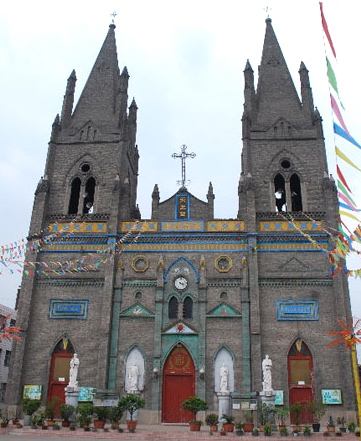 What is it like to be a Catholic in China today? This essay from Ignatius Insight offers a surprising, and moving, glimpse of survival in the face of persecution:
What is it like to be a Catholic in China today? This essay from Ignatius Insight offers a surprising, and moving, glimpse of survival in the face of persecution:
One of the most astounding Catholic success stories in China is the village of Liuhecun, located an hour’s drive outside of the economically poor capital city of Shanxi, Taiyuan, the center of what is China’s most Catholic diocese. Liuhecun is difficult to find without help, and it is best accessed through the introduction of one of the local priests. On the way to the village one of Shanxi’s largest secrets unfurls; church after church dot the landscape and high steeples rise above small villages as they do in southern France.
Passing through a narrow side road one arrives at Liuhecun and is welcomed by three great statues at the village entrance: St. Peter holding his keys is flanked by Saints Simon and Paul. Thirty minutes before Mass the village loudspeakers, once airing the revolutionary voice of Mao and Party slogans, now broadcasts the rosary. Winding through the village, the large church with its imposing edifice and towering dome loom above, and once you arrive you are greeted by a curious admixture of Romanesque architecture, yellow plastic palm trees, and streaming colored banners. Shanxi has its own peculiar tastes, and almost every church contains two large grandfather clocks (no-one could tell me the origin of this curious tradition) and lines of colored flags in and outside the sanctuary.
Liuhecun is China’s largest Catholic village. Attending one of the church’s Sunday Masses, which draws nearly three thousand faithful, is dizzying. Before Mass the priests and faithful kneel to intone the rosary in an old Shanxi-style chant – it is a loud affair, broadcast over loudspeakers. In what is only a very modest village by Chinese standards – around seven thousand people – more than ninety percent are Catholic. One of the reasons for its strong commitment to its Catholic faith, villagers say, is the village’s endurance through the two terrible anti-Catholic persecutions.
You’ll want to read the rest. It’s an inspiration.
